23 Feb 2018
Painted Advertisements in Islington: Part 3
The list below of painted advertisements in Islington was compiled in the hope that some of those reading it might write in with additional locations not known to the compiler, and in the belief that painted advertisements in other parts of London would make a useful, educative and rewarding topic for those, whether private enthusiasts or history teachers in secondary schools, who are interested in setting up a local history project that has not already been thoroughly explored.
This was how A. D. Harvey introduced his inventory of Painted Advertisements in Islington in an article for Volume 50 of Transactions of the London and Middlesex Archaeological Society. Last year I set myself the task of retracing his steps in 1999 to see what remained and what had been lost in the 19 years since. I completed most of the work quite soon after publishing the original blog post, but was waiting for just one location on Whitecross Street to become visible again after the removal of scaffolding on the building. This has now happened and I have subsequently completed my analysis. I am going to publish the findings as a series of three posts, respectively detailing numbers 1-17, 18-34 and 35-51 of Harvey’s original inventory which is recorded on this map.
I should first note that although Harvey lists 51 locations in his inventory, he actually details 54 signs in total. Item 8 is (inexplicably) split into both (a) and (b) while additional pieces of signage are referenced in the accompanying texts for items 16 (Graham Street) and 47 (Turnmill Street). I will therefore use this higher number in my analysis.
In total, 21 of the signs documented by Harvey are no longer visible. The reasons for this are broadly as follows: Building demolished (4); Building cleaned (5); Sign painted over (3); Faded completely (2); Covered by building works (1); Unknown (6). One sign (Mallow Street) was lost due to a combination of being painted over and obscured by the upward extension of the neighbouring building. Given that some would be still be visible despite the building works, I have categorised this as being painted over. Nonetheless, both factors in this sign’s loss fall under a broader category of ‘property development’ which accounts for 13 (just over 60%) of the 21 losses, with just two (c.10%) disappearing due to ‘natural causes’ and the remainder being unknown.
This rate of loss approximates to just over one per year since Harvey’s initial survey i.e. they are being lost at a rate of 2% per year. However, in parallel, signs in Harvey’s survey have since been revealed, or become more visible than when he was writing. There are six of these in total, including one (Chapel Market) which is a ‘like-for-like’ replacement; the Redferns Rubber Heels sign was revealed after the cleaning of the partial John Kinns sign. If we combine the losses and gains then we arrive at a net figure of 15 lost from an initial sample of 54 which gives an annual rate of loss of 1.5%. This shows that, within this specific geography, more are being lost than revealed with the ratio of reveals to RIPs being 2:7.
While this analysis pertains only to this particular part of London, it is nonetheless a useful gauge for the nature of losses (predominantly property development) and the rate at which these are occurring. I would be very interested to find similarly detailed historical inventories that could be compared to the current day to see if similar trends are evident elsewhere.
So, over to the report, first up Numbers 18-34 from Harvey’s survey…
18. 123 Highbury Park N5
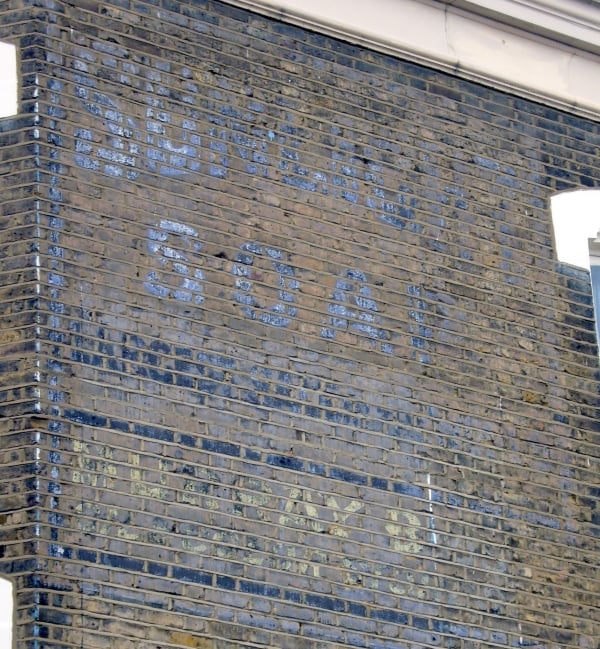
This is one of many surviving pieces for Sunlight Soap.
19. 45 Holloway Road N7
All that is present at this location are modern buildings so it seems likely that the original host building has been demolished.
20. 56 Holloway Road N7

This is one of a number of surviving signs in London advertising Army Club Cigarettes, another being part of a palimpsest at the first stop on my Stoke Newington Ghostsigns Walk.
21. 129 Holloway Road N7
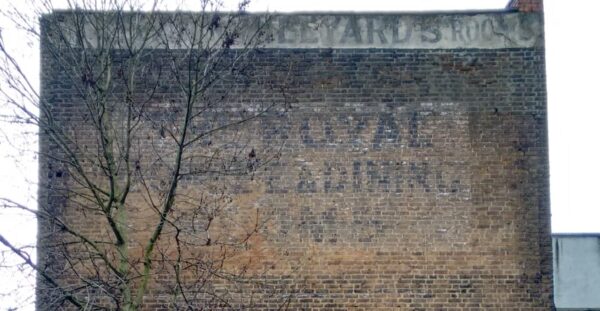
This one is still visible with Harvey missing some of the text in his transcription. The main sign, in full, says “The Royal Coffee & Dining Rooms”. There is also a horizontal strip across the top that says “Coffe & Dining Hillyard’s Rooms” which Harvey makes no mention of.
22. 138 Holloway Road N7
Harvey references a Gillette signs “covered by hoarding” of which there is no evidence now.
23. 174 Holloway Road N7
As above Harvey’s “letters just visible behind modern hoarding” are either gone completely or now fully covered.
24. 185 Holloway Road N7 (at back, visible in Palmer Place)
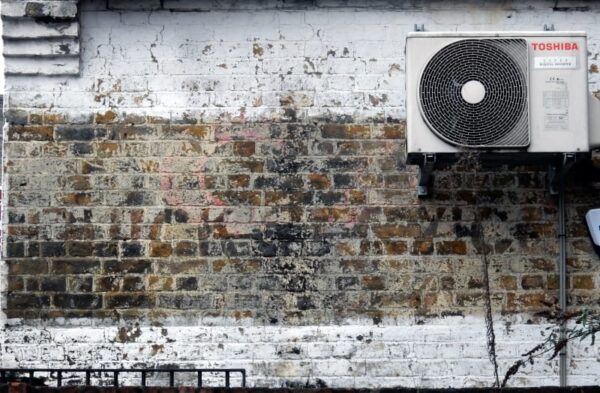
Still hanging in there, but now on last legs.
25. Holloway Road, at side of Holloway Road Underground Station
Nothing apparent on the station now for Harvey’s partial transcription “Good Received and…”.
26. 268 Holloway Road N7
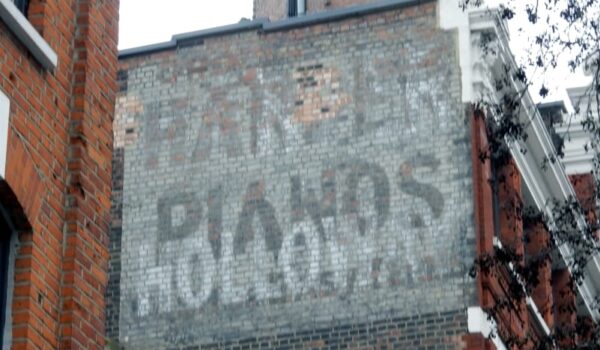
This palimpsest (Harper of Holloway / Harper Pianos) is still visible high up on its host building, although recent cleaning has hastened its decay.
27. 720 Holloway Road N19
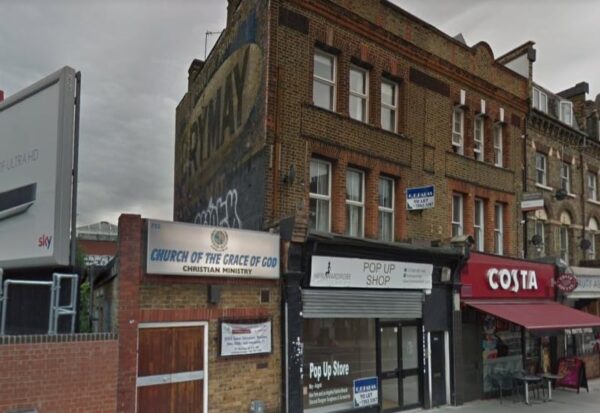
Harvey details the majority of this Brymay sign being covered by a mounted billboard. In 2017 this was repositioned, allowing a much better look at the full Brymay sign. (Picture above from Google Streetview.)
28. 49-51 Hornsey Road N7
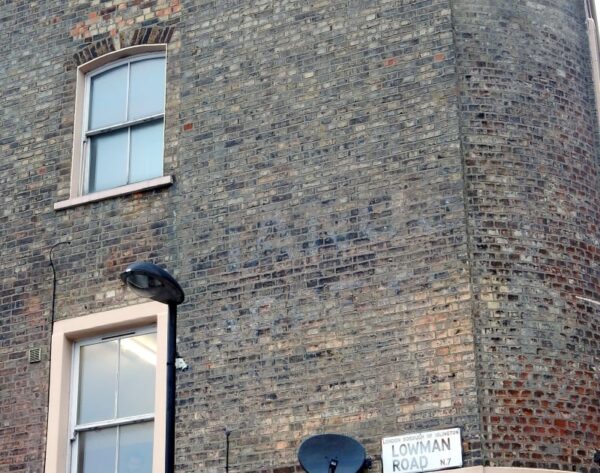
Still there with the bottom of “Pianos” and the top of “Carpets” only just visible.
29. 490 Hornsey Road N19
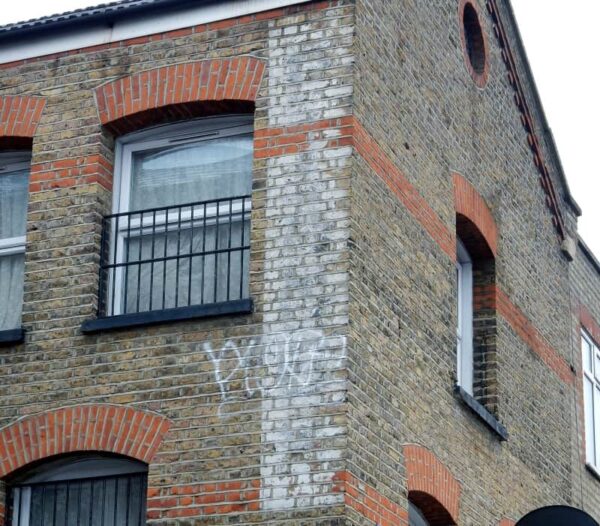
An interesting vertical execution, and a connection to the Harper of Holloway survivor on Holloway Road.
30. Hurlock Street N5
Large fascia panels that would have housed signage are still present, but the detailed lettering that Harvey saw has since been painted over.
31. 27 Islington High Street N1
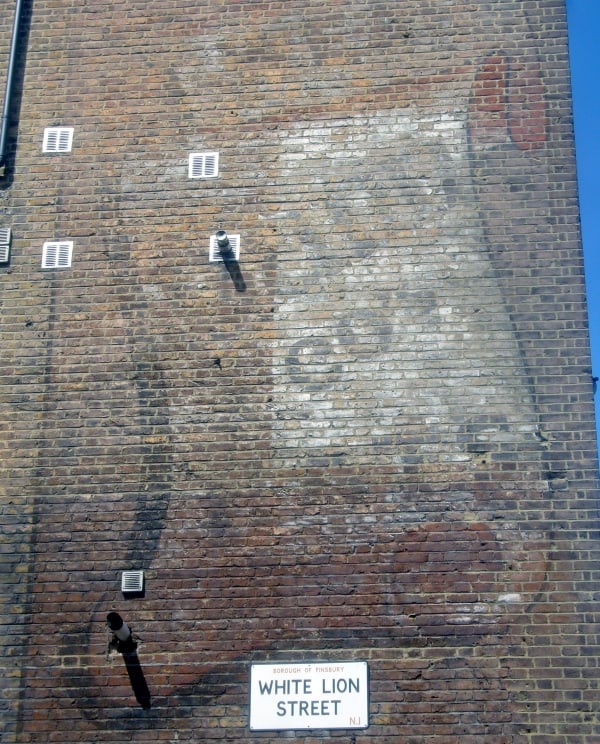
This can still be seen above the Pret a Manger that is now on the corner, once advertising Dunn & Co’s Hats.
32. 525 Liverpool Road N7
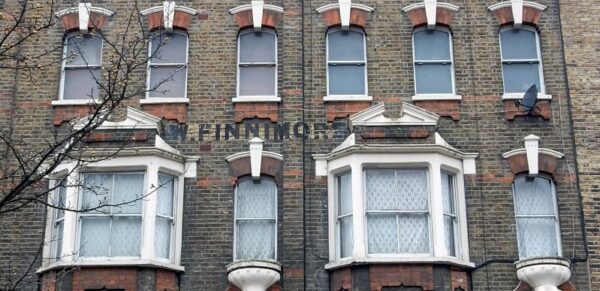
Finnimore, piano key manufacturer, still visible.
33. 11 Mallow Street EC1
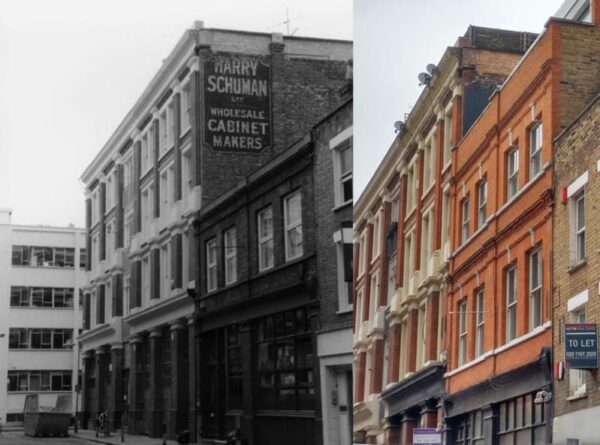
The upward extension of the neighbouring building, painting out and other developments have led to the loss of this one for Harry Schuman.
34. 52 Newington Green N16
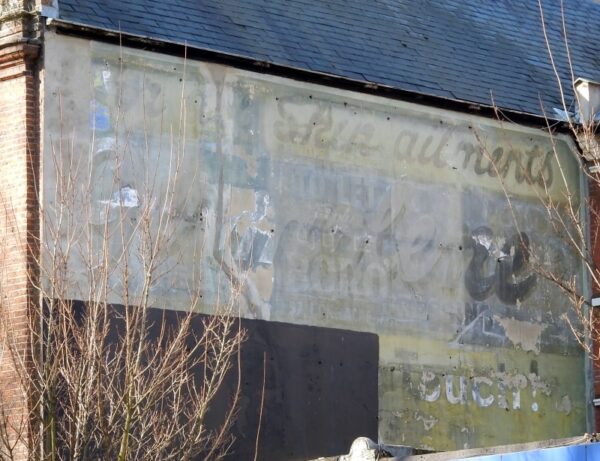
The billboard partially covering this sign that Harvey mentions has now gone and allows more text to be deciphered, including “For all skin ailments, Germolene”. There is also a faint remnant of the word “Boro” which was a firm that leased walls for advertising as evidenced by this clearer example in Wandsworth and others documented here on Caroline’s Miscellany.


